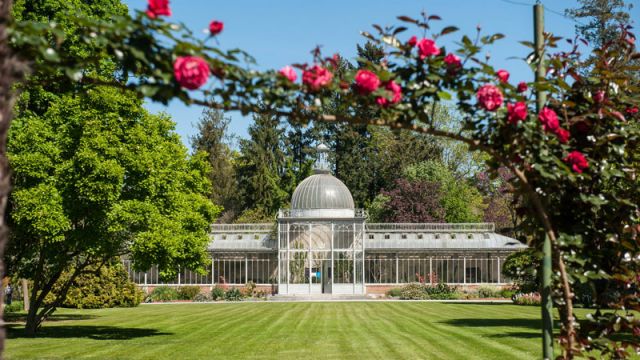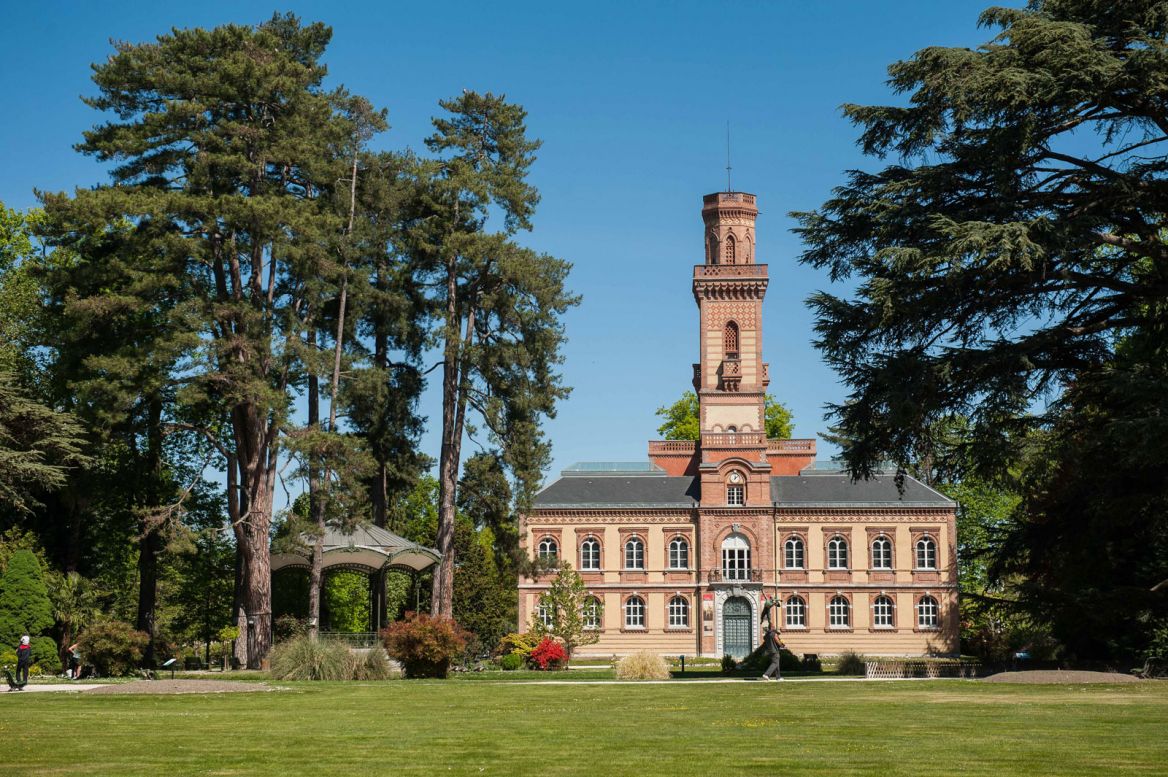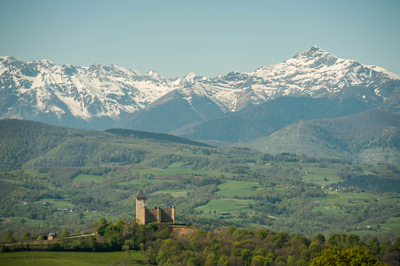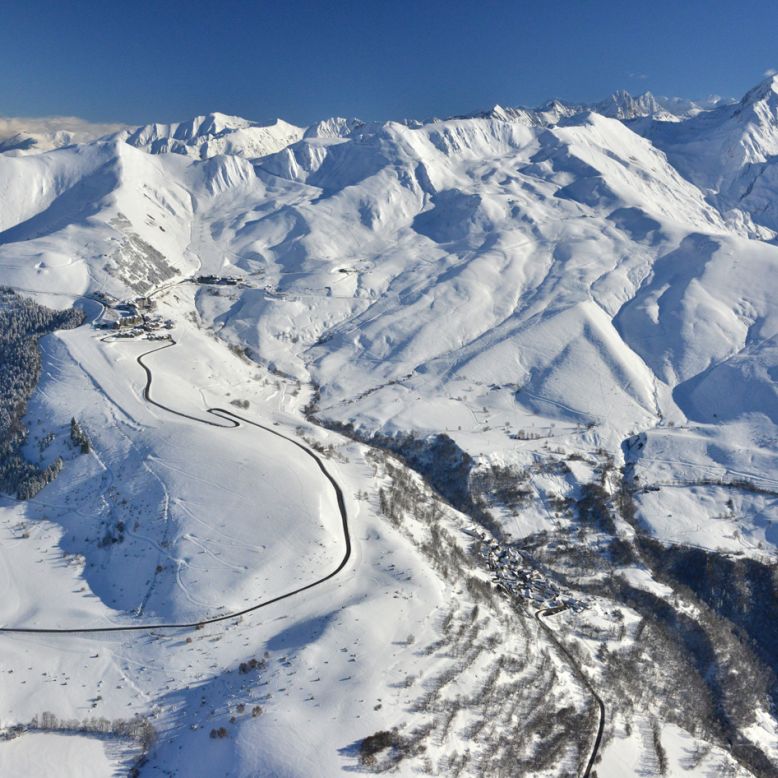- Home page
- Tourism
- Discover
- Visit Toulouse region and the French Pyrénées
- Hautes Pyrénées - From Tarbes to the Plateau of Lannemezan
- Visit Toulouse region and the French Pyrénées
- Discover
- Tourism
From Tarbes to the Plateau de Lannemezan
Tarbes has a view of the highest peaks of the Pyrenees and is located on the side of the Adour River. The historic capital of Bigorre and capital of the Hautes-Pyrenees department, Tarbes is a university town focusing towards high tech industries and particularly aeronautics. Its historic quarter is full of architectural treasures from various periods.
Tarbes is also the town of the horses with its national “haras” (stud farm). Created in 1806, under Napoleon, it stretches over 8 hectares (20 acres) at the heart of he town. Stallions, anglo-arab, Merens ponys, draft horses live peacefully on this listed site, a true living museum which is now “la maison du cheval” (The house of the horse), a fun and museographic place. A dedicated horse festival “Equestria”, takes place each year in July around many other festivities.
Tarbes also houses the native home of Marechal Foch (1851-1929). An 18th/19th century Bigorre house dedicated to the man who had led France to victory during the First World War. Foch was also elected to the “Académie française” (French Academy – The pre-eminent French council for matters pertaining to the French language). A visit to his house, and the many original documents it holds allow the visitors to immerse themselves in the great history of France.
 Another Tarbes figure: Placide Masseys (1777-1853, a naturalist and a landscape designer who worked in Versailles. Placide Masseys created in his native town an English style park carrying his name and which, on 15 hectares (37 acres), does record many rare species (sequoias, cedars, goldenrain trees, Siberian elm trees, persimmons from Virginia...) The park, also listed as “Jardin Remarquable” houses a 19th century kiosk (The label “Jardin remarquable” was creates in 2004”, it recognized and value the parks and gardens open to the public and well maintained). The Masseys Museum (European paintings from the 16th to 19th century, and the collection of the hussars – light calvary regiment – from 1545 to 1945) as well as the cloister of Saint-Sever-de-Rustan Abbey returned to the city in 1830.
Another Tarbes figure: Placide Masseys (1777-1853, a naturalist and a landscape designer who worked in Versailles. Placide Masseys created in his native town an English style park carrying his name and which, on 15 hectares (37 acres), does record many rare species (sequoias, cedars, goldenrain trees, Siberian elm trees, persimmons from Virginia...) The park, also listed as “Jardin Remarquable” houses a 19th century kiosk (The label “Jardin remarquable” was creates in 2004”, it recognized and value the parks and gardens open to the public and well maintained). The Masseys Museum (European paintings from the 16th to 19th century, and the collection of the hussars – light calvary regiment – from 1545 to 1945) as well as the cloister of Saint-Sever-de-Rustan Abbey returned to the city in 1830.
 Built in the 12th century, the Notre Dame de la Sède Cathedral, which was formerly fortified, was developed from the 14th to the 19th century. A marble baroque canopy protects the altar.
Built in the 12th century, the Notre Dame de la Sède Cathedral, which was formerly fortified, was developed from the 14th to the 19th century. A marble baroque canopy protects the altar.
Tarbes also has a stunning Baltard style covered market, made of glass and steel the “halle Marcadieu” where every Thursday morning, a vast market takes place.
Tarbes is also a busy town around place de Verdun, nerve centre of the shopping street rue de Brauhauban and the new “arsenal” quarter (rehabilitated in 2014). Tarbes is situated close to many great tourist sites: Gavarnie, Pont d’Espagne, Pic du Midi…regional capitals, the Aragon, however, the town has also a rich neighbouring heritage which is worth visiting.
On the outskirts of Tarbes, the Ibos village has an imposing 14th century gothic church and fortified donjon-tower. Inside, the pulpit and the statue of Saint Laurent, both dating from the 13th century, are listed.
Approximately 20km northwest of Tarbes, the Gardères Castle is situated at the heart of the village. This beautiful 15th century property was altered during the 18th century. The castle has the particularity to be situated within an enclave, administratively attached to the Hautes-Pyrenees (Department No 65) but although situated in the Pyrenees Atlantiques (Department no 64).
 Around 30km south of Tarbes, the territory of Baronnies, close to the thermal towns of Bagnères-de-Bigorre and Capvern, is the abbey of Escaladieu. Built during the 12th century, burnt during the religious wars and rebuilt during the 17th century, the abbey is an invitation to serenity. The Cistercian style building, with streamlined design, is majestic. The abbey has been a listed Historic Monument since 1939. This whole complex is enhanced by the beauty of the site with at its foot, Mauvezin Castle with its medieval military architecture
Around 30km south of Tarbes, the territory of Baronnies, close to the thermal towns of Bagnères-de-Bigorre and Capvern, is the abbey of Escaladieu. Built during the 12th century, burnt during the religious wars and rebuilt during the 17th century, the abbey is an invitation to serenity. The Cistercian style building, with streamlined design, is majestic. The abbey has been a listed Historic Monument since 1939. This whole complex is enhanced by the beauty of the site with at its foot, Mauvezin Castle with its medieval military architecture
Heading to Lourdes, the Bétharram caves, situated in the Pyrénées-Atlantiques (via their entrance) and the Hautes-Pyrénées (via their exit) are by far, the most beautiful caves in Europe. The Bétharram caves shelter important concretions and an underground river. They were discovered in 1819 and opened to the public in 1903. They can be visited by boat and by little train.
Zygoland
Zygoland
Zygoland in Tarbes is a whole world of games for your children with no age limit, with a real catering area planned ...
3,5 km - Tarbes
UP2PLAY
UP2PLAY
UP2Play, a fun and thematic escape game near Tarbes Prepare your brain, the session only lasts 60 minutes. But ...
4,8 km - Ibos
UP2PLAY - Blindtest et Karaoké
UP2PLAY - Blindtest et Karaoké
UP2PLAY Ibos-Tarbes: Blindtest and Karaoke, two unique musical experiences to live! Welcome to UP2PLAY Ibos-Tarbes, ...
5,0 km - Ibos




